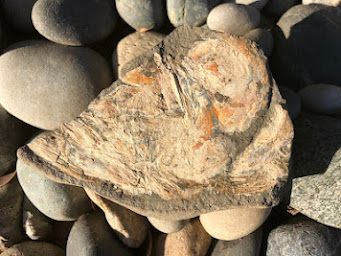But their story begins long before that, deep in the fossil record, when canids first began to evolve.
The ancestors of today’s wolves can be traced back more than 30 million years to the early canids of the Oligocene. One of the earliest known members of the dog family is Hesperocyon, a small, fox-like carnivore that lived in what is now North America.
Over millions of years, these early canids diversified into various forms, including the dire wolf (Aenocyon dirus) and the gray wolf (Canis lupus), which appeared around 1 to 2 million years ago.
The gray wolf evolved in Eurasia and migrated into North America via the Bering land bridge during the Pleistocene. Once here, it quickly became a dominant predator across the continent, adapting to a wide range of environments—from the Arctic tundra to the deserts of Mexico.
Today, Canis lupus is still widely distributed across North America, although its range has contracted significantly due to human expansion, habitat loss, and historical persecution. Wolves are found in:
- Alaska – home to the largest populations in North America.
- The Rocky Mountains – including parts of Montana, Idaho, and Wyoming.
- The Western Great Lakes – especially Minnesota and Wisconsin.
- Canada – particularly British Columbia, Alberta, and the boreal forests of the northern provinces.
- Vancouver Island – which hosts a distinct coastal population.
- The Pacific Coast – small populations in Washington and Oregon are making a comeback.
Wolves are apex predators and essential for maintaining healthy ecosystems. They primarily prey on large ungulates such as deer, moose, elk, and caribou.
In coastal regions, particularly on British Columbia’s Central Coast and Vancouver Island, wolves have adapted their diets to include salmon, intertidal invertebrates, and even seals. I have seen them eat their way along the tide line, scavenging whatever the sea has washed up for their breakfasts.
These wolves have been observed swimming between islands in search of food, a behavior rarely seen in inland populations. If you explore the coast by boat, kayak or other means, you can see their footprints in the sand, telling you that you are not alone as you explore the rugged coast.
Wolves help control herbivore populations, which in turn benefits vegetation and can even influence river systems, as famously demonstrated in Yellowstone National Park after wolves were reintroduced in 1995.
Wolves on Vancouver Island
Vancouver Island is home to a small but resilient population of coastal wolves, often referred to as coastal sea wolves. These wolves are genetically and behaviorally distinct from their inland counterparts. While exact numbers fluctuate, current estimates suggest approximately 350 wolves live on Vancouver Island.
They are elusive and tend to avoid human interaction, making them difficult to study and count accurately. Much of what we know comes from the work of wildlife researchers and photographers such as Ian McAllister, whose documentation of coastal wolf behavior has been instrumental in raising awareness.
If you are looking to see more of these coastal predators, search out the work of photographers like Liron Gertsman, Ian Harland, and Sandy Sharkey, who have captured stunning images and footage of these elusive creatures in their natural habitat, along our beaches and old-growth forests.
Despite their adaptability, wolves face a number of threats:
- Habitat Loss and Human Encroachment: As logging and development continue to fragment wild areas on Vancouver Island, wolves are pushed into closer proximity with humans, increasing the likelihood of conflict.
- Hunting and Trapping: Wolves are not protected under the Wildlife Act in much of British Columbia and can be hunted or trapped in many areas. Although controversial, some view wolf control as a means to support ungulate populations for hunting.
- Poisoning and Culling: In parts of Canada, wolves have been poisoned or culled in misguided efforts to protect caribou herds, despite ecological evidence showing that habitat preservation is more critical to caribou survival.
- Decline in Prey: As deer populations fluctuate due to climate change, human hunting pressure, and habitat alteration, wolves may face food scarcity.
- Public Misunderstanding: Myths and negative stereotypes about wolves still persist, sometimes fueling unnecessary fear and policy decisions not based on science.
- Wolves have been on this land longer than humans. Their long evolutionary journey has shaped them into highly specialized, intelligent animals with complex social structures. But their survival now depends on us.
On Vancouver Island and across the continent, conservation efforts, education, and science-based wildlife management are essential to ensuring wolves continue to howl in the wild for generations to come.
Vancouver Island local, Gary Allan, who runs the SWELL Wolf Education Centre in Nanaimo and is known for his extensive work in wolf advocacy and education is a good resource of up-to-date information on our coastal wolves.
He has been educating the public about wolves since 2006, both through the Tundra Speaks Society and the education centre. Allan's work involves interacting with wolves, including his wolf-dog Tundra, and sharing his knowledge with schools, community groups, and First Nations organizations.
Have you seen one of our coastal wolves up close and in person? It is a rare treat and for me, generally on an early morning walk. I hope we keep the balance so that the wolves live in peace and continue to thrive.
Further Reading and Resources
McAllister, Ian. The Last Wild Wolves: Ghosts of the Rain Forest. Greystone Books, 2007.
Mech, L. David, and Boitani, Luigi (eds.). Wolves: Behavior, Ecology, and Conservation. University of Chicago Press, 2003.
Fossil Canids Database – University of California Museum of Paleontology
Raincoast Conservation Foundation – https://www.raincoast.org
















.png)


